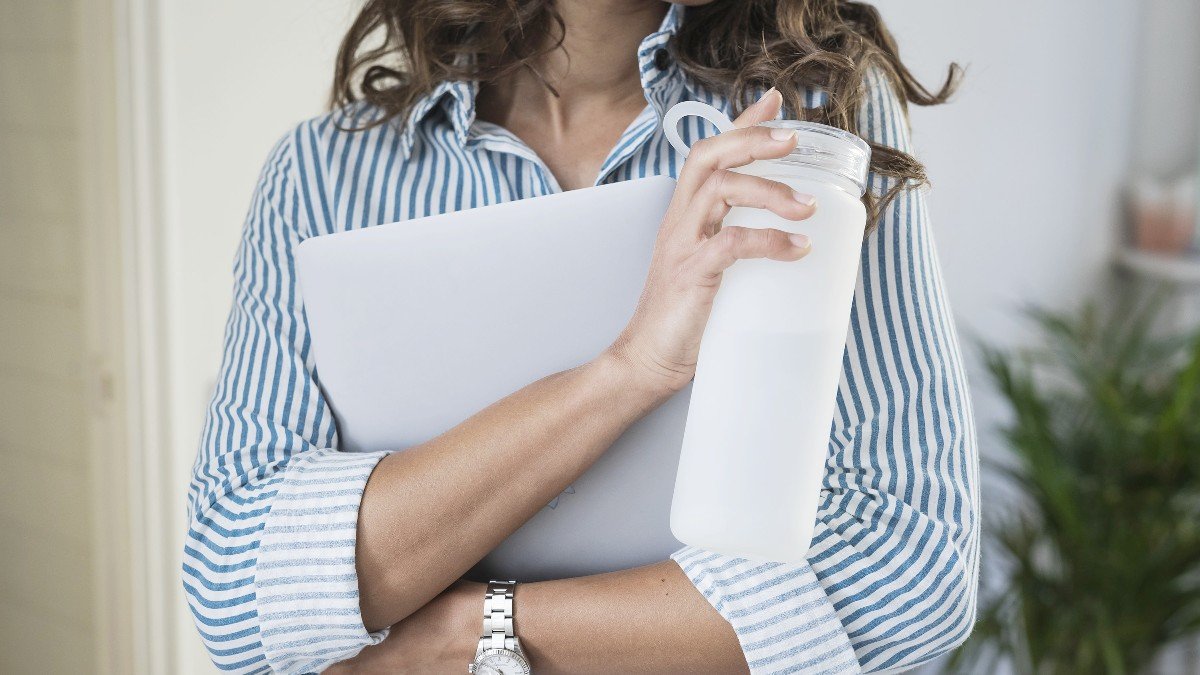Is Mold in a Water Bottle Harmful?

With more and more people being concerned with their health and fitness, there has been an increase in the popularity of water bottles. In fact, the water bottle industry is now valued at $8.38 billion, a figure that is projected to grow to over $11 billion by 2028.
But reusable water bottles aren’t these perfect things – they have their disadvantages too.
For one, they can grow mold – a fact that has many worried about the harm they can do to their health.
So today, we have decided to ease your concerns. In this post, we are going to answer all the popular questions about mold and water bottles.
Can mold grow in closed water bottles?
Yes, as long as there is air, water, and some food particles in your water bottle, mold can grow – it doesn’t matter whether it’s sealed or not. So if your water bottle keeps getting mold, this is a sign that you’re not cleaning it or drying it well.
To prevent this, always thoroughly clean your bottle, pay close attention to its rubber parts, and let it air dry for hours, even overnight when possible.
Is mold in a water bottle harmful?
While the mold growing in your water bottle can be harmless, it can also be toxic and make you sick if you ingest it. In fact, it can cause diarrhea, nausea, cramping, and respiratory problems.
One mold that popularly grows in water bottles, black mold, is particularly known to be one of the most toxic molds out there.
How do you get mold out of a reusable water bottle?
Some of the ways that you can get mold out of your reusable water bottle include:
- Use soap and warm water
This is the easiest way to deal with mold. Just pour a mixture of water and dish soap into your bottle, close it, shake it, pour out the water, and use a brush to scrub it. While scrubbing the interior of your bottle, ensure you reach everywhere and pay special attention to the rubber parts of the bottle and its cap. Afterward, you can rinse everything and leave it to air dry. - Use distilled white vinegar
To get rid of mold, first, fill your bottle halfway with a mixture of 1:1 water and distilled white vinegar. Afterward, close the bottle, shake it, and let it sit for a few hours – you can even let it sit overnight. Once this is done, pour out the solution, rinse the bottle and cap with warm water then let it air dry. - Use concentrated hydrogen peroxide
Pour 3% concentrated hydrogen peroxide into your bottle, shake it, and let it sit overnight. Afterward, you can rinse it and let it air dry.
How do you get mold out of a water bottle straw?
To get rid of mold growing in your water bottle straw, you could soak them for a few minutes in a solution of chlorine bleach and water.
Afterward, you can use a brush to scrub their inside with soap and water before rinsing and air drying them.
Consider getting a stainless steel water bottle
Truth be told, stainless steel water bottles do a better job of resisting mold than plastic ones.
However, all reusable water bottles can get mold. So no matter what type of bottle you have, ensure you clean and dry it regularly – it’s the only way to keep mold at bay!
